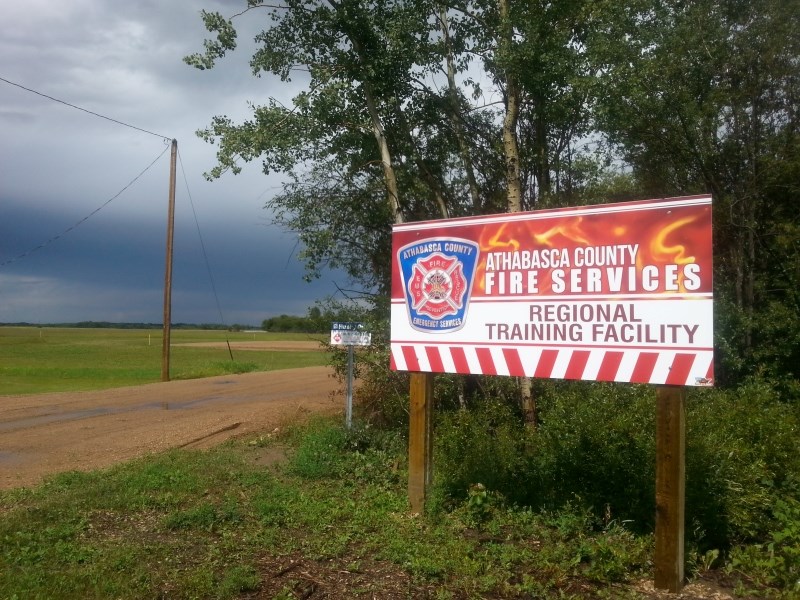A new regional firefighter training centre will open its doors north of the Athabasca Regional Airport this fall.
The Live Fire Simulator Training Facility will provide Athabasca County’s nine fire departments and other regional fire departments with a controlled setting in which to train under certified instructors.
“The pressure’s on to be as realistic as possible,” said Ron Jackson, Athabasca County’s director of Emergency Services. “It really targets things like confined space entry, search and rescue in buildings, and more than anything, use of their breathing apparatus. There’s nothing that compares to that kind of training.”
The building will be assembled out of three sea cans, or steel shipping containers. The sea cans will be 40 feet long, 16 feet wide and two stories tall, and are currently being welded together by Fire Training Solutions in Lethbridge before being shipped to Athabasca in September.
“The beauty of this is that if we ever want to expand, it’s pretty easy,” Jackson said. “You can make it longer, taller and wider. This is very practical for the types of responses we’re likely to get around here, and frankly affordable.”
Last fall, Athabasca County fire services and former regional fire coordinator Bryan Hall proposed a new facility to county council, which approved the project at a cost of $165,000.
The price of the structure cost $130,000, but the gravel pad and groundwork for the site were additional.
“We spent some money on getting the site prepared, and there are a few other things that have to go along with the site, like a huge water reservoir,” Jackson said. “In time, we would like to have our own breathing air compressor here,” which will cost another $25,000.
Prior to this facility, firefighters trained by setting up partitions in the fire hall, blacking out their masks, and then practised using their breathing apparatus and conducting mock searches while blind.
“You can train as much as you want in a garage or outside walking around with a breathing apparatus, but the advantage of this facility is it’s real smoke, it’s real heat,” he said.
Another advantage, Jackson added, is the ability to partition off sections of the building in a variety of ways, to simulate the set-up of different houses and industrial areas.
“The objective is to search every square inch of the building and around every obstacle that happens to be placed,” he said.
Jackson said the facility will be supplemental to the training already offered to volunteers. He said volunteers will undergo course-based training at the nearby hangar in the mornings, followed by practical training in the sea cans in the afternoon.
“We have a quite aggressive training program that was established over the last couple years and we want to keep that going.”
In addition, the building will be on par with other training centres in Vermillion, Calgary, Lethbridge and Edmonton, and will be accessible to volunteer firefighters in Lac La Biche, Thorhild, Westlock, Lesser Slave Lake and Calling Lake.
“I think it’s really going to evolve into something enviable,” Jackson said.



